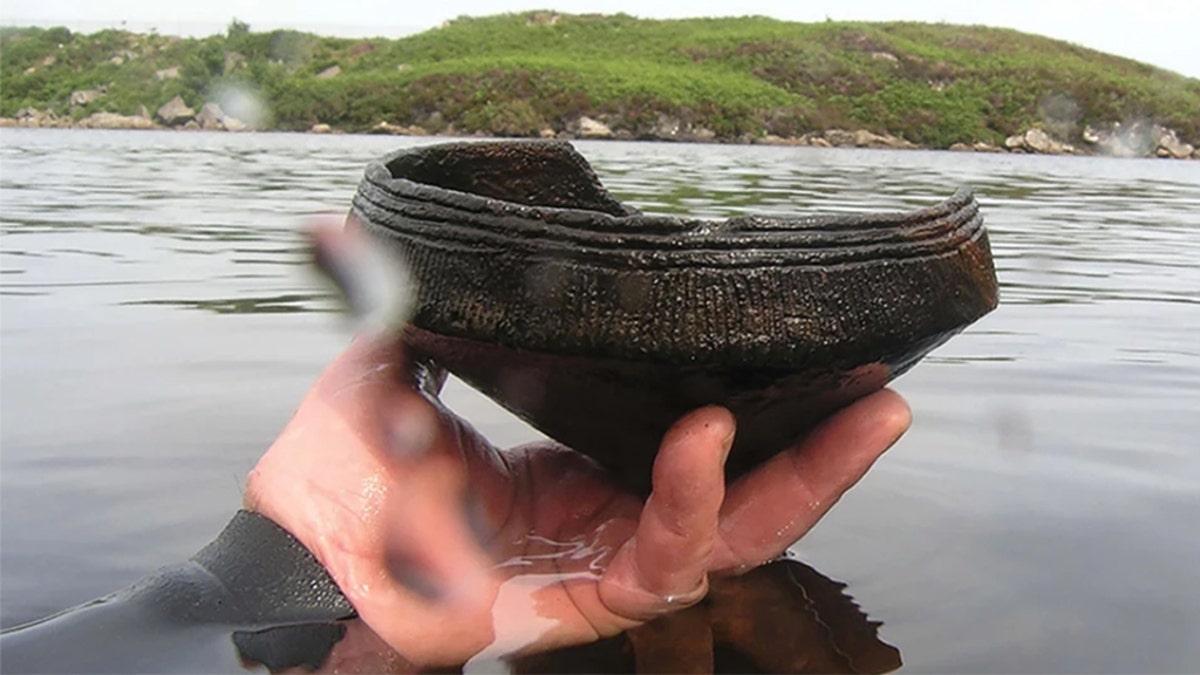
(Credit: Antiquity)
Mysterious man-made islands in Scotland are thousands of years older than we thought.
The stone structures are found in lochs across the country and were likely built by ancient Britons as sacred spots for meals and funerals.
Prehistoric tribesman rolled blocks weighing up to 25 kilos into the water to form short platforms you can still see today – though many are now covered by trees and other plant life.
Hundreds of the monuments, known as crannogs, have been found so far, and for decades experts presumed they were constructed in the Iron Age, around 800 BC.
But a new study reveals at least some of the islets are far older, dating back to around 3,700 BC.
This makes the crannogs older than Stonehenge, which Neolithic men began building in Wiltshire 700 years later.
Scientists found Neolithic pots at crannogs in lochs around the Outer Hebrides. They show some crannogs are up to 5,500 years old. Scientists reckon the islets were used by locals for thousands of years before they were abandoned a few centuries ago.
"They would have required a huge investment of labor to build and probably remained significant places for a long time," said Dr Duncan Garrow from the University of Reading.
"Such islets may well have represented substantial symbols for, and of, the communities that constructed them.
"These islets could also have been perceived as special places, their watery surroundings creating separation from everyday life."
Crannogs are frequently built out of stone and timber and more than 600 survive today.
They peek just above the water in lochs, particularly along Scotland's west coast and on the islands of the Outer Hebrides, off the northwest coast of the mainland.
Dr. Garrow teamed up with former Navy diver Chris Murray for the research.
In 2012, Murray found a treasure trove of well-preserved Neolithic pottery while diving at a crannog in the Outer Hebrides.
After the find, he teamed up with Dr. Garrow and found hundreds of Neolithic pots around four other crannogs in the region.
Radiocarbon dating suggests items were intentionally placed around the structures by ancient Britons about 5,500 years ago.
It remains unclear what the sites were used for, but experts think they were special places for social gatherings, ritual feasts or funeral sites.
The study was published in the journal Antiquity.
This story originally appeared in The Sun.




















